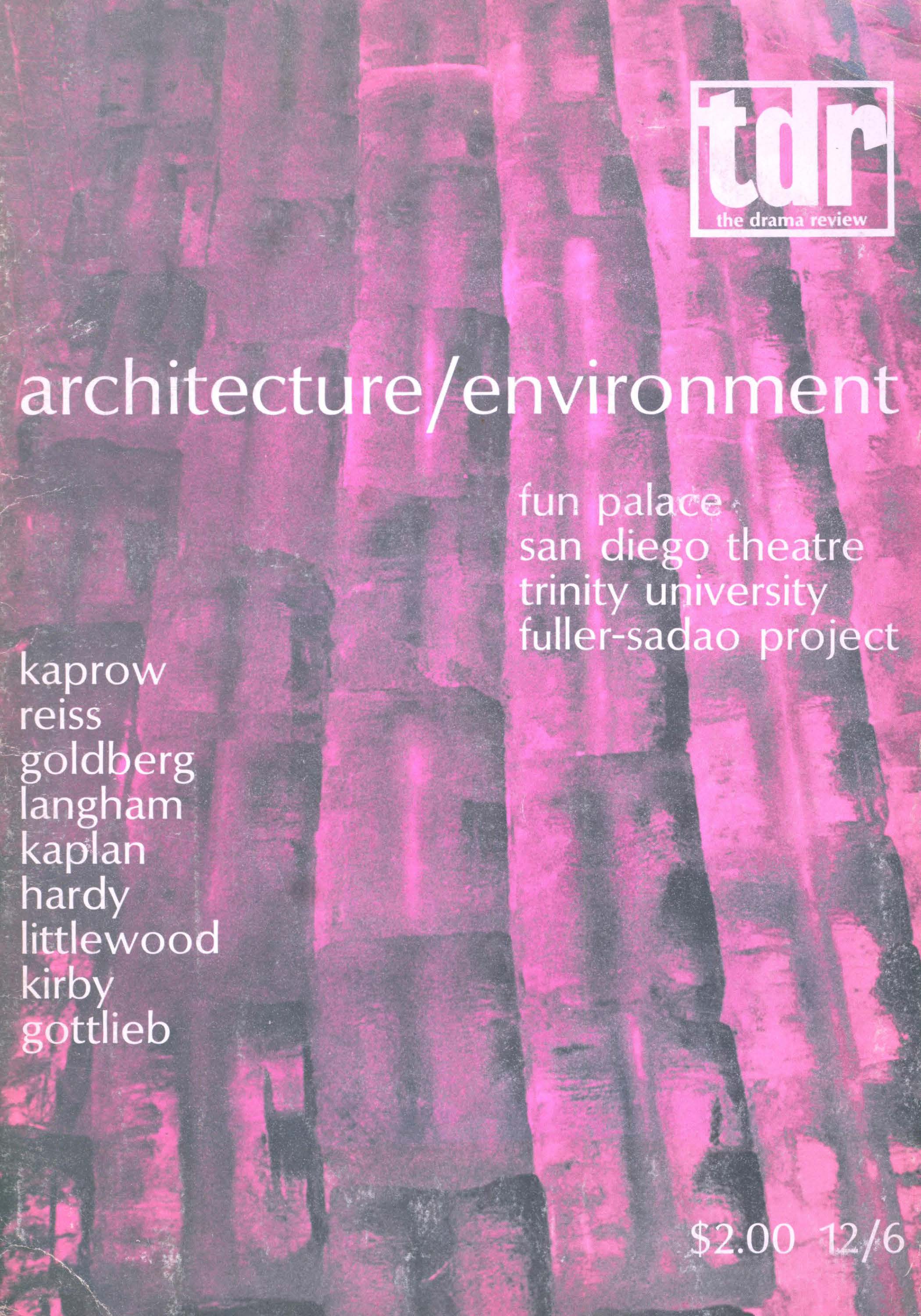Article contents
Peter Schumann's Bread and Puppet Theatre: Dada and Circus
Published online by Cambridge University Press: 07 December 2021
Extract
The Bread and Puppet Theatre has often been described as a street theatre whose desire is to reach a popular audience. Often this has meant performing in streets, parks, and city ghettos, doing anti-war parades, setting up workshops in poor neighborhoods, or building puppets with children and getting them involved in the preparation of a show. However, along with these outdoor performances, they have always done indoor shows. There are obvious differences between a “chamber play” such as Fire, played in a specific area before a limited number of spectators, and a street piece like A Man Says Good-bye to His Mother: Although both plays have the same “subject” (the war in Vietnam), the first one conveys the story by the form itself—movements, sounds, colors, volumes, etc.—and it is, in a way, the spectator's job to “read” it through all the assembled elements.
- Type
- Popular Entertainments and The Avant-Garde
- Information
- Copyright
- Copyright © 1974 The Drama Review
References
1 Poland, May 1972, p. 3. Unless otherwise indicated, all Schumann quotes are from personal interviews, particularly my interview with him in September 1973.
2 For background material on the Bread and Puppet Theatre, see: Kourilsky's, Françoise book Le Bread and Puppet Theatre (Lausanne: Éditions La Cité, 1971)Google Scholar, as well as the following issues of The Drama Review: T38, T47, and T55.
The title photograph by Oleg Kalinowski and Jim Hoffman is of Our Domestic Resurrection Circus, October 1970.
3 That Simple Light May Rise Out of Complicated Darkness was first performed in the Haybarn at Goddard College in November 1972, and then at St. Clement's Church in New York City in December 1972. It has since been toured in New England and Europe.
4 Schlemmer, O., Moholy-Nagy, L., Molnar, F.. The Theatre of the Bauhaus. Introduction by Walter Gropius. Wesleyan University Press, 1961.Google Scholar
5 “In contrast to the drama or the opera, all parts of the Merz Stage Piece are inseparably bound up together; it cannot be written, read or listened to, it can only be produced in the theatre. Up until now, a distinction was made between stage-set, text, and score in theatrical performances. Each factor was separately prepared and could also be separately enjoyed. The Merz stage knows only the fusing of all factors into a composite work. Materials for the stage-set are all solid, liquid, and gaseous bodies, such as white wall, man, barbed wire entanglement, blue distance, light cone.… Materials for the score are all tones and noises capable of being produced by violin, drum, trombone, sewing machine, grandfather clock, stream of water, etc. Materials for the text are all experiences that provoke the intelligence and emotions. The materials are not to be used logically in their objective relationships, but only within the logic of the work of art. The more intensively the work of art destroys rational objective logic, the greater become the possibilities of artistic building… . Take in short everything from the hair net of the high class lady to the propeller of the S. S. Leviathan, always bearing in mind the dimensions required by the work.” Kurt Schwitters in an article on the Merz Stage Piece in Strumbuhne, Berlin, 8, Folgo, 1918.
6 See Suvin, Darko, “Reflections on Happenings,” in The Drama Review, vol. 14, N. 3 (T 47), p. 134.Google Scholar
7 Michael Kirby, The Art of Time, Dutton, 1969, p. 84.
8 Schumann attended a concert by John Cage in Germany in 1960. He discovered many ideas that he himself had tried to put into practice—free use of sounds, acrobatics, jokes, etc. This “meeting” with Cage prompted him to plan to leave for the United States.
9 Our Domestic Resurrection Circus was first performed by The Bread and Puppet Theatre on Cate Farm Meadow in September 1970. In February and March of 1971, they took the piece to Boston, Rhode Island, and Ohio.
10 Poland, March 1970, p. 4.
11 “Poisons, Worries, Screams” in Poland, May 1972, p. 18
12 In 1970, the Bread and PuppetTheatre played in Coney Island in an old theatre on Surf Avenue.
- 2
- Cited by


